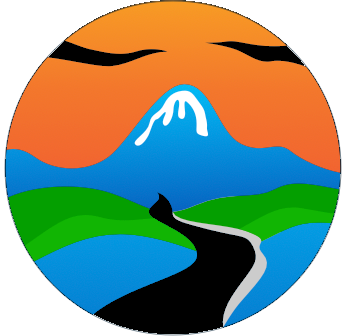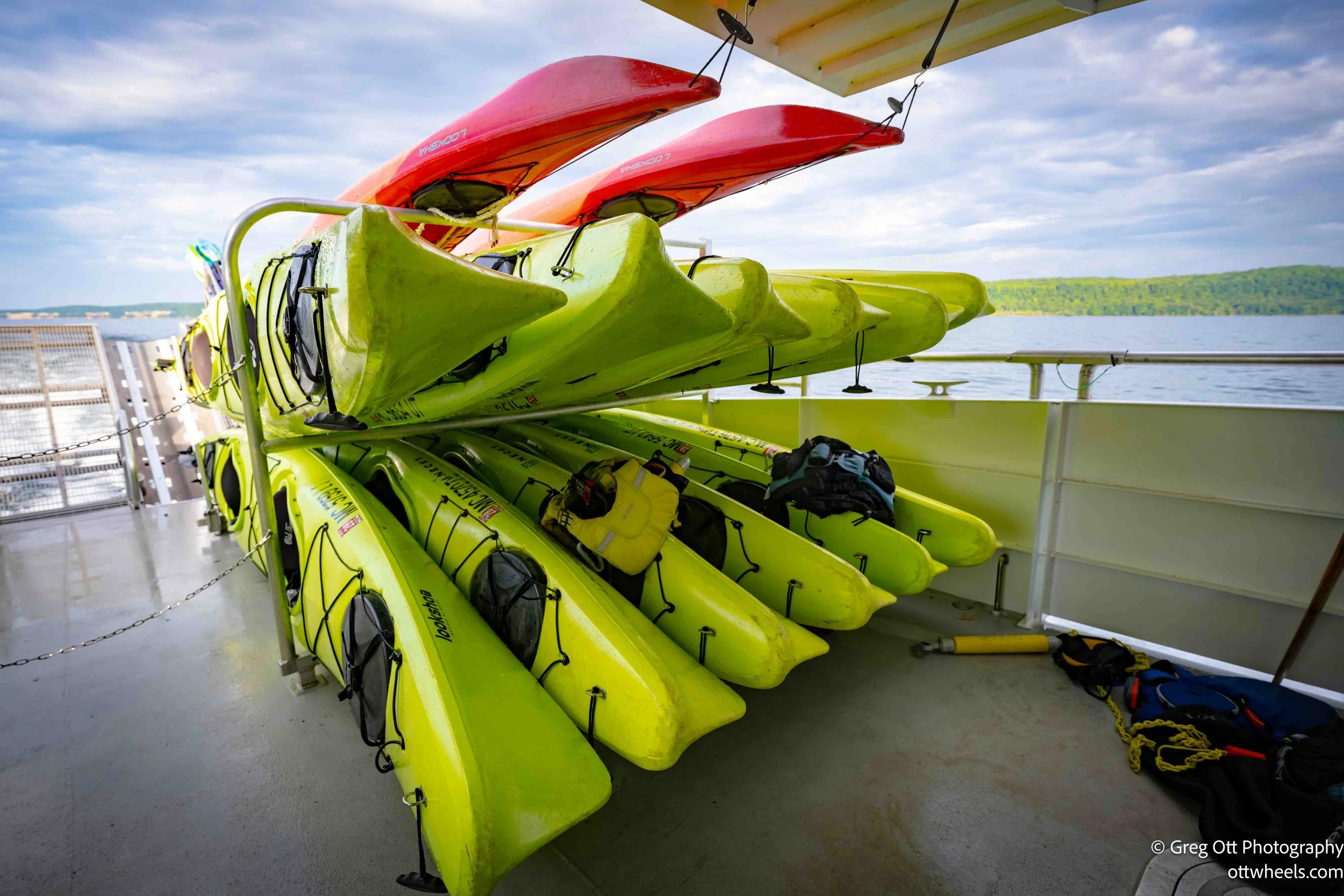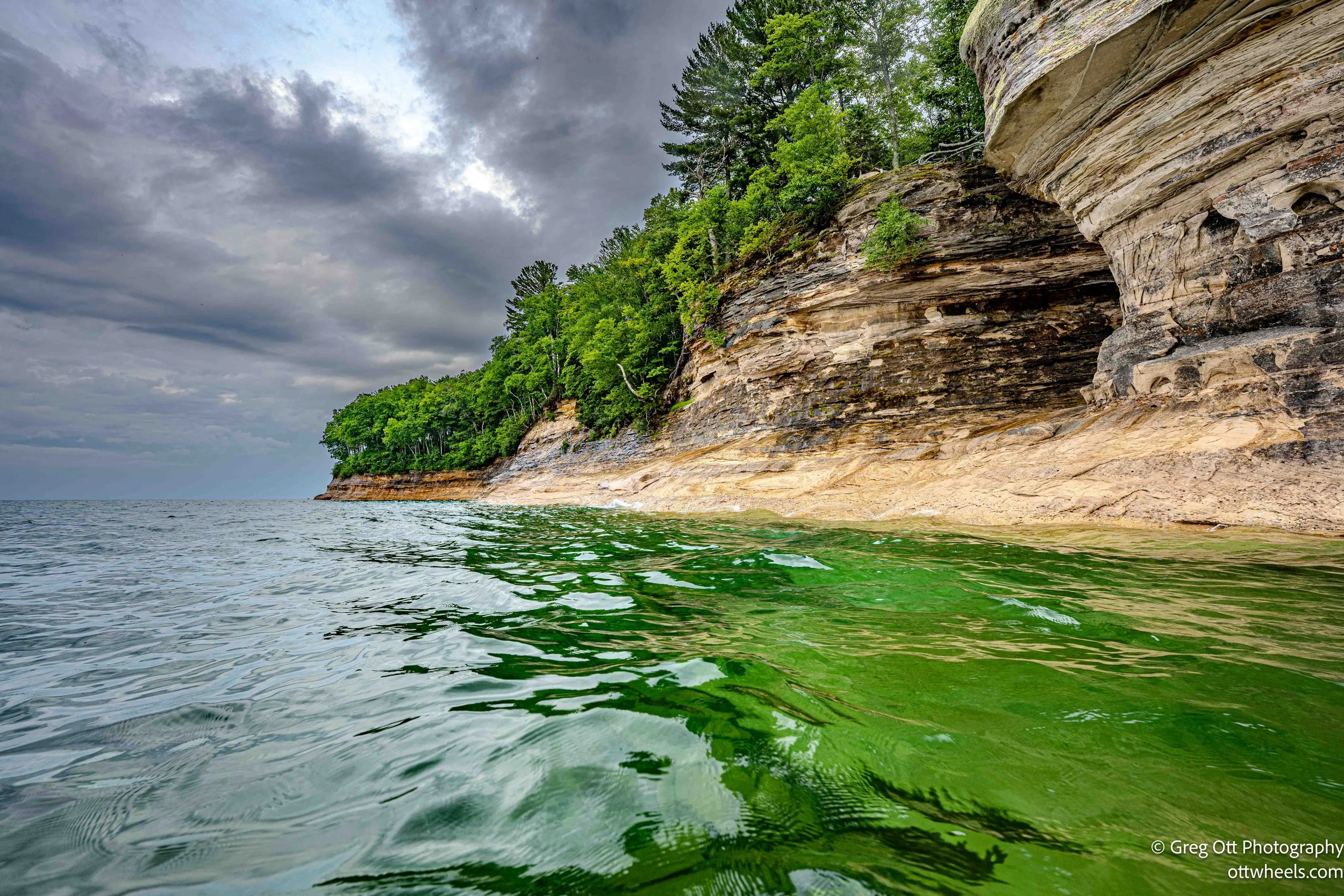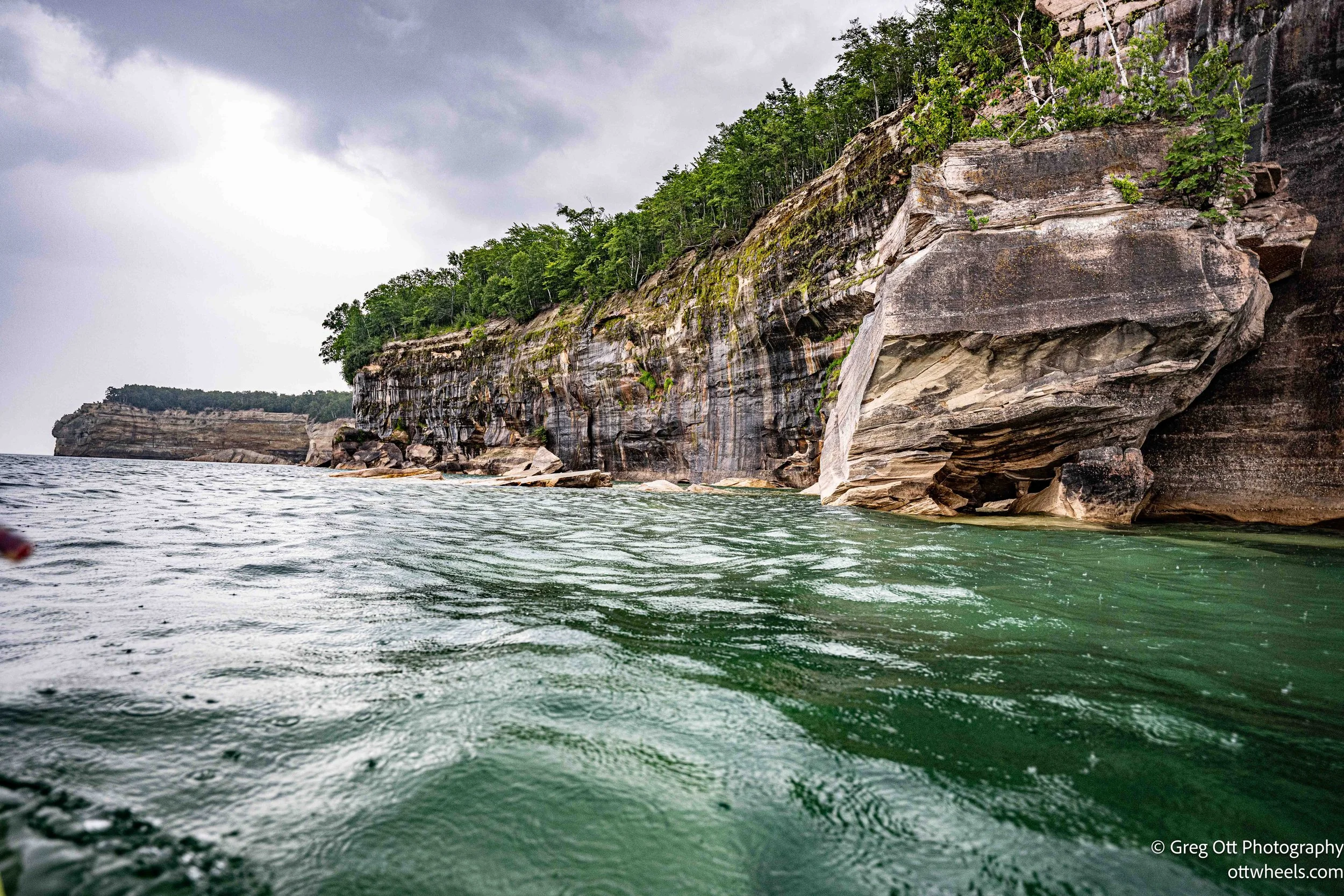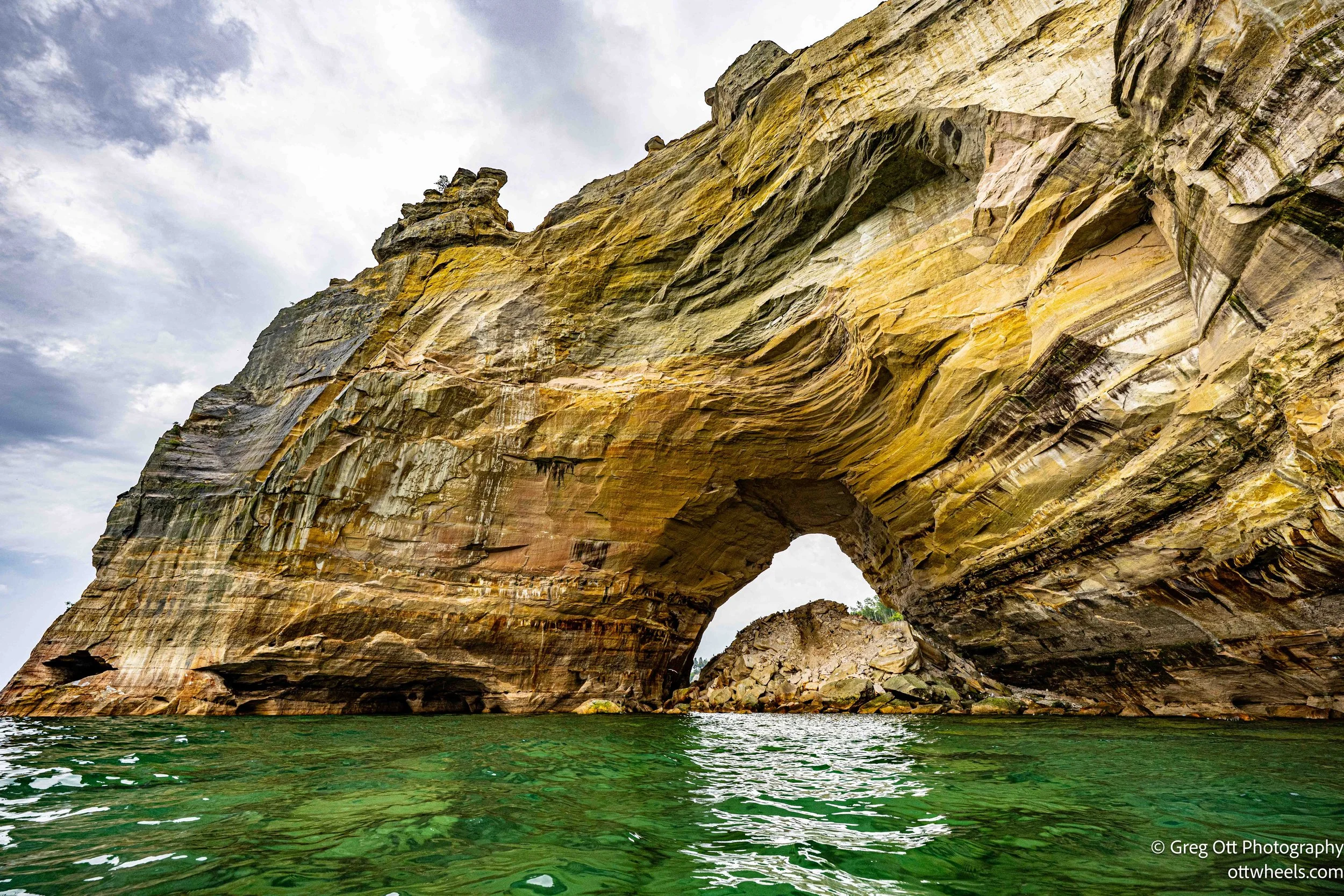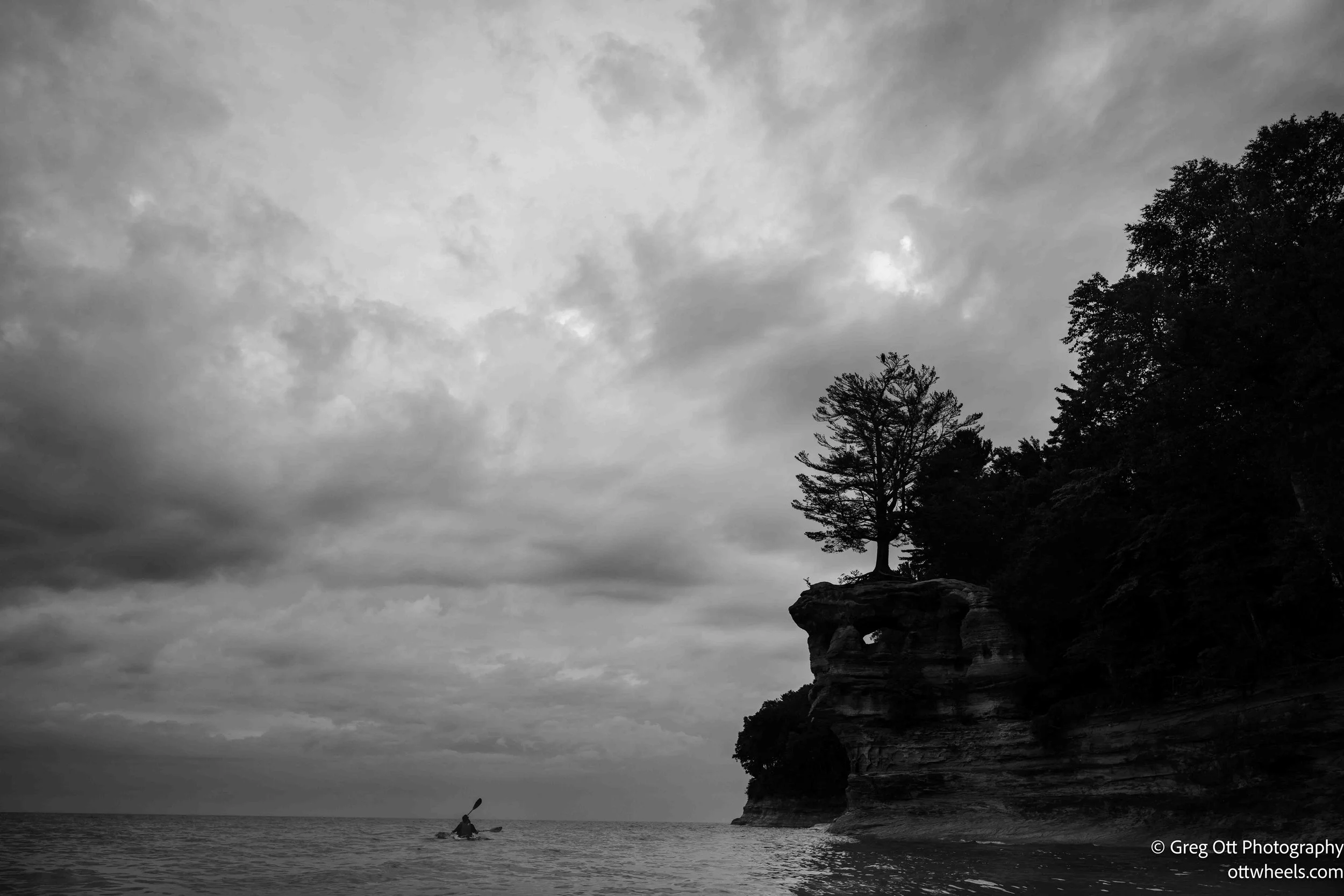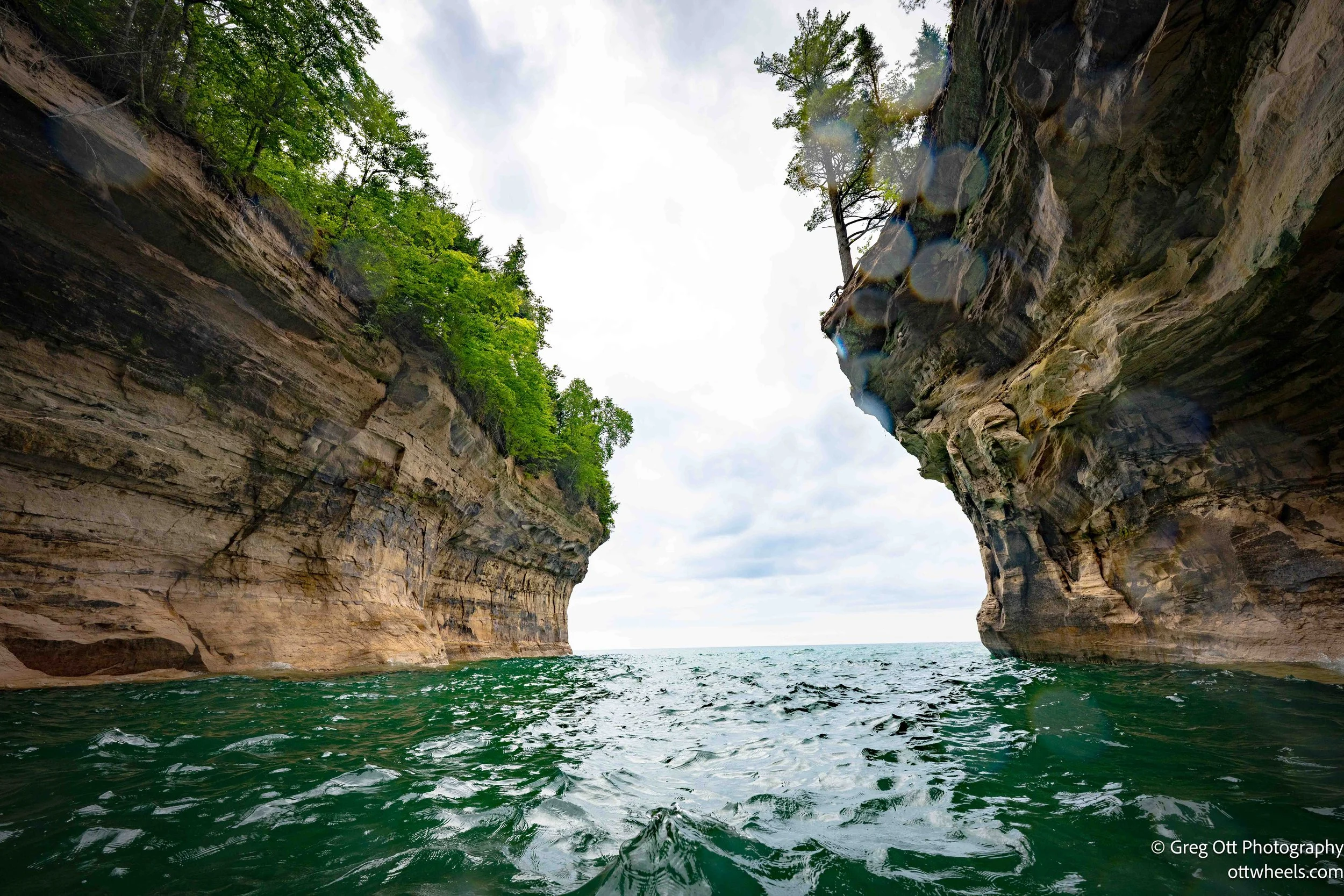Pictured Rocks Kayaking Adventure
I woke up in the Hiawatha National Forest rather late. I’d finally found this spot the night before and pulled in around 11:30. The van was a mess — I hadn’t put things back in their place. I’ve learned that things need to stay tidy or I have trouble finding what I need, and then the whole van just feels crowded. I’ve been enjoying the sunsets more and more lately, wandering off to find interesting shots, so my days have been shifting. I tend to stay up later and then wake later. I probably need a day soon to catch up and reset.
When I looked out the window, I noticed that old bus was still parked there. I wondered if someone had left it and gone off to explore or if there were old hippies just drifting from forest to forest. I don’t run into many people traveling alone like I do.
I went about making breakfast, got that first cup of coffee in me, and settled in to read emails, check social media, and do some morning writing. Sometime later, I heard voices near the bus. I opened the door and saw a young couple with their dog. The dog wasn’t friendly at first but settled down once he got used to me. They’d recently bought the bus from an older hippie couple out in California. He’s 28, from Florida, and had just left his job. She’s 26, from Virginia but had been living in Philadelphia, still working on the road thanks to Starlink.
They were eyeing my van so I offered to give them a tour, and they returned the favor. Their bus felt so spacious compared to my van — really homey, too. It had dark tongue-and-groove paneling on the sides and ceiling, big windows all around, a shower area, and even a little wood stove near the bed. The stove was only about an 18-inch cube but vented through the ceiling — they said it puts out plenty of heat in the winter. I loved the whole vibe, and they had this calm, peaceful energy about them. We swapped vanlife stories for a while before wishing each other safe travels and heading off in our own directions.
Painted Rocks Kayaking
It was getting close to 1 p.m., and I needed to be at the Pained Rocks kayaking company by 3. It was only a 20-minute drive, and I knew they had a big lot out back, so when I got there, I parked and made myself some lunch, packed my gear, and made a quick espresso. My energy level was pretty low that day, but I was looking forward to getting on the water.
They’d told me to arrive by 3 for check-in and instructions for the Pictured Rocks Kayaking trip (which came to $171 with taxes and fees). I got there about 15 minutes early, walked into the little office-slash-t-shirt shop, and heard a woman in the far corner say, “There’s only one person, Greg Ott, who hasn’t checked in.” I called out, “I’m here!” and she laughed, “Just in time.” I thought to myself, no, I’m early — and double-checked my email just to be sure.
I’d met so many people who said, “You have to see Pictured Rocks.” I didn’t want to just sit on a boat from a distance — I wanted to be right there in it. Kayaking was the only way that made sense for me. I was clearly the oldest one on the tour by far — most were college students or parents with teenagers in tow. Because I’m usually alone on these kinds of trips, I often get paired with a guide, and that was the case again.
This time I was paired with Bryce, the guide for Group 3. Bryce had left a lab job at a pharmaceutical company, taken a huge pay cut, and was now doing what he loved. He was articulate, patient with stragglers, and knew his stuff. As we paddled, he shared so much about the rock formations, the minerals, and the geological history. He pointed out that one layer just above the waterline was formed over 100 million years ago — way before any animal life, which is why you won’t find any fossils in it.
When I got into the kayak, Bryce said, “If you’d rather focus on your photography, I can do all the paddling.” I told him I’d gladly take him up on that but asked if we could bring an extra paddle just in case. That’s when I noticed the unusual paddle he was using. He called it a “Greenland kayak paddle.” It looked like a long, tapered stick at first glance. Bryce knew the ins and outs of it and explained why it’s so efficient — it’s easier to brace and roll with, handles wind better, allows a more horizontal stroke, and is easier on the shoulders and muscles for longer trips. He makes these paddles and sometimes sells them in the shop.
About halfway through the trip, there was a boat behind us really struggling — they just couldn’t get the hang of paddling and their arms were shot. The group behind caught up to us, and Bryce ended up towing the tired kayakers. I offered to help and asked if I could try “Sally,” the name he’d given his Greenland paddle. I’ve kayaked with standard paddles before, and this felt completely different — so much smoother. Bryce talked me through the right grip, how to turn the paddle, and the proper stroke.
I did spend most of the trip snapping photos. The sky was dramatic, constantly changing, with lightning way off in the distance. Our boat captain kept a close eye on it to make sure we stayed out of any danger. It rained off and on, but somehow that didn’t dampen anyone’s spirits. The boat shadowed us the whole time, ready for medical help, seasickness, or even bathroom breaks. We never needed it, but it was reassuring to know they could get to us within a minute if needed. Bryce told me he could be to a boat in about 25 seconds if someone capsized — pretty impressive.
I booked the 2-hour kayaking tour at Pictured Rocks and I’m glad I did — there’s just no better way to see these cliffs than right on the water. From the start, the sandstone cliffs rose up beside me in layers of burnt orange, deep reds, and streaks of bright turquoise where minerals have seeped through the rock for centuries. It felt like paddling through a massive outdoor gallery where the paintings change with every bend in the shoreline. I could see where the waves have carved arches and caves into the cliffs, each one looking like it could collapse at any second but somehow staying frozen in place.
As we glided along, the guide pointed out features like Lovers Leap and Chapel Rock, but honestly, half the time I was lost in my own little world just staring up at the sheer rock faces. Water dripped down the walls in places, feeding tiny ferns and moss clinging to impossibly narrow ledges. The water itself was shockingly clear — I could see the rocky bottom ten, fifteen feet down. Now and then, we’d float through patches where the lake turned this unreal shade of emerald green under the midday sun.
My favorite part was pulling into some of the small caves and alcoves, letting the kayak bob around as I looked up at the cathedral-like ceilings. The sound of the waves echoing off the stone made it feel even more special, like the place was alive. Being that close to the cliffs, I could really feel just how powerful and patient nature is — all that time and water slowly sculpting this place into something so beautiful. I came away with a new appreciation for how fragile and strong the shorelines of Lake Superior really are.
One thing that stuck with me was hearing about the recent rock slides — the cliffs are constantly changing. There was an arch the guide pointed out that used to be big enough for tour boats to pass under, but it collapsed within the last hundred years. It’s a reminder that this whole shoreline is alive and always shifting.
We also spotted cormorants everywhere — floating in the water, perched on narrow ledges, and at one point a flock of about thirty of them lifted off together in this wild, noisy burst. Seeing them against the backdrop of these massive, crumbling cliffs made the whole place feel even wilder and more untamed.
It was close to 8 when we made it back. This was easily one of the highlights of my trip so far.
Later that evening, I heard there was live music in the center of Munising. I was surprised there weren’t more people there. I found a spot on the street facing the water, close enough to hear the band. I made dinner in the van and listened to them play covers from the ‘80s through today.
I stayed until almost 10, took a few shots of the lake in front of me, and then headed back to the same quiet spot in the National Forest. I had it all to myself that night. I could hear the trees rustling gently as I drifted off in silence.
